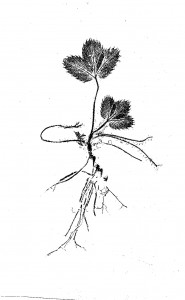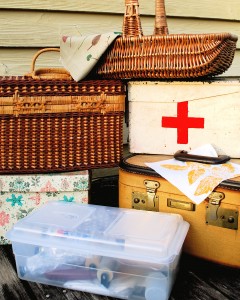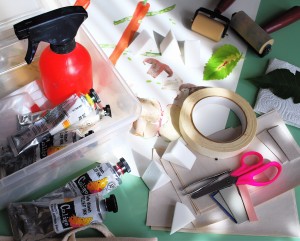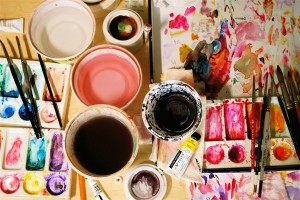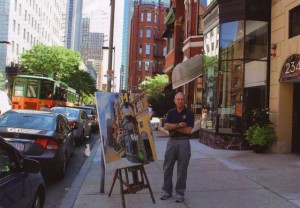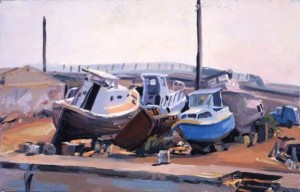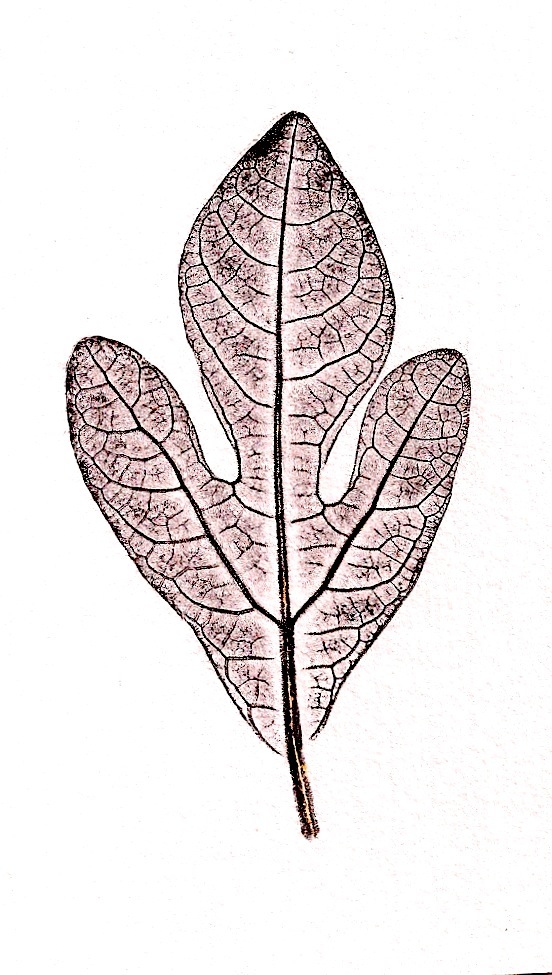
Experience is the real thing. Breathing in the teeming, earthy fragrance of a spring morning is an ordinary, sensory experience. Dipping bare feet into a rushing stream or examining faceted crystals on a frosty windowpane are common experiences that, if we pay attention, have the power to awaken a profound place of beauty within us. We have the capability to recognize the beauty and mystery of nature because beauty and mystery are at the heart of our being. It is in all the life around us – it is us.
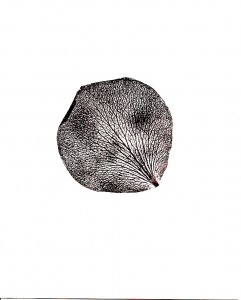
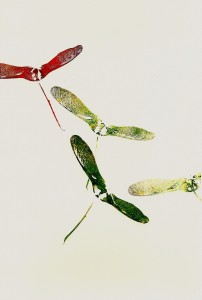
When we’re hand-printing nature and reveling in all her shapes and patterns, we begin to notice similarities within the seemingly different: how wood grain looks like the ripples on a pond, how a cut lemon is like a daisy. The patterns of nature — branching, radiating, turbulence, and spiraling, to name a few — recur in different forms.
The branching pattern we see in trees is typical of vascular systems. It is found in leaf veining and root growth in plants, and in lung structures and blood circulation in animals. Colonies of bacteria, ice crystals, water channels, and lightning all exhibit branching patterns.
Radiating or explosion patterns take place in stars and volcanoes and can be seen in the streaming rays of the sun, yet the explosion pattern also occurs in diminutive flowers. From a daisy’s golden center disk burst radiating petals. Named because it mimics the sun, daisy comes from its Old English name, “day’s eye.”
Turbulence exists in the swirls of moving air currents and clouds. Turbulent water flows are experienced while riding the ocean waves or watching the vortex that’s created as water spirals around the sink drain. A similar spiraling pattern is found in the unfurling tendrils of grapevines, morning glories, and fern fiddleheads and in the florets of sunflowers. In most plant species, leaf growth forms a spiral up the stem. Fingerprints, the muscles of the apex of the human heart, mollusk shells, antlers, spiderwebs, and tornadoes are all spirals. In The Curves of Life, by Theodore Andrea Cook, we learn that the spiral formation was widely used as a decorative pattern throughout the ancient world as a symbol for “creative power or energy, the strength and divinity of the sun . . . and many sacred phenomena of life.” The double helix of DNA is a molecular spiral, and the Milky Way, like most galaxies, is a cosmological spiral. The pattern of the universe itself is an enormous primordial turbulence.
These patterns are maps of nature. Ultimately, everything belong to the same repeating patterns and consists of the same particles of matter that constitute life. Categorizing these elements makes us realize how fundamentally similar everything really is. Nature is our source and inspiration. When hand-printing nature, we recreate the artistry of her designs and unveil some of her secrets. We learn that we belong to Nature and that Her subjects are our own.
*excerpt from my book Hand Printing from Nature (copyright L.Bethmann, 2011)
*illustrations: nature printed sassafras leaf, rose petal and maple seeds.

